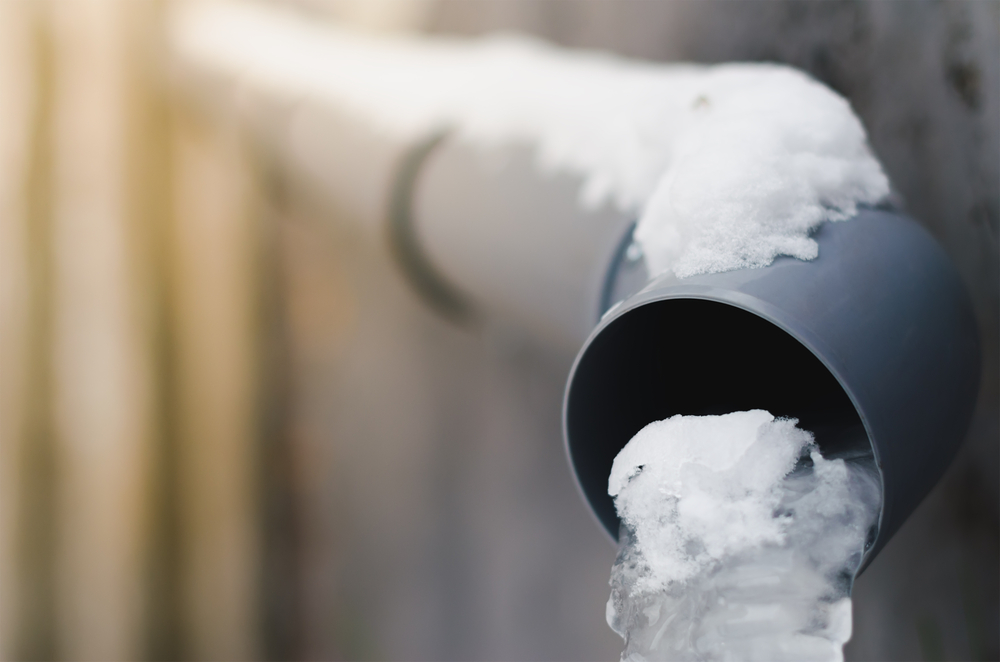Here on the next paragraphs you might get lots of really good material related to 6 Ways to Prevent Frozen Pipes.

Cold weather can ruin your pipes, especially by freezing pipes. Below's just how to stop it from occurring and what to do if it does.
Introduction
As temperature levels decrease, the risk of icy pipes rises, potentially leading to pricey repair services and water damage. Comprehending how to avoid frozen pipelines is crucial for property owners in chilly environments.
Avoidance Tips
Shielding prone pipes
Wrap pipes in insulation sleeves or utilize warm tape to shield them from freezing temperatures. Focus on pipelines in unheated or exterior areas of the home.
Home heating methods
Keep indoor spaces adequately warmed, especially locations with plumbing. Open cabinet doors to enable cozy air to circulate around pipes under sinks.
Just how to identify icy pipelines
Look for reduced water circulation from taps, unusual odors or sounds from pipelines, and noticeable frost on exposed pipes.
Long-Term Solutions
Structural modifications
Take into consideration rerouting pipelines far from outside wall surfaces or unheated areas. Add extra insulation to attics, basements, and crawl spaces.
Upgrading insulation
Invest in top quality insulation for pipes, attics, and walls. Proper insulation aids keep constant temperatures and lowers the danger of frozen pipelines.
Protecting Outside Plumbing
Yard hose pipes and outdoor taps
Separate and drain yard hoses prior to winter. Set up frost-proof faucets or cover outdoor faucets with protected caps.
Understanding Frozen Pipelines
What creates pipes to freeze?
Pipelines ice up when subjected to temperatures listed below 32 ° F (0 ° C) for extended durations. As water inside the pipes ices up, it expands, putting pressure on the pipe walls and potentially triggering them to rupture.
Dangers and problems
Icy pipes can cause water supply disruptions, residential or commercial property damage, and costly fixings. Burst pipelines can flood homes and trigger extensive structural damage.
Indicators of Frozen Water Lines
Recognizing frozen pipelines early can stop them from rupturing.
What to Do If Your Pipes Freeze
Immediate activities to take
If you think icy pipelines, keep taps open to soothe stress as the ice melts. Utilize a hairdryer or towels soaked in warm water to thaw pipes gradually.
Conclusion
Stopping frozen pipes calls for proactive actions and quick actions. By recognizing the causes, indications, and safety nets, property owners can shield their plumbing during cold weather.
6 Proven Ways to Prevent Frozen Pipes and Protect Your Home
Disconnect and Drain Garden Hoses
Before winter arrives, start by disconnecting your garden hoses and draining any remaining water. Close the shut-off valves that supply outdoor hose bibs and leave the outdoor faucet open to allow any residual water to drain. For extra protection, consider using faucet covers throughout the colder months. It’s also important to drain water from any sprinkler supply lines following the manufacturer’s directions.
Insulate Exposed Pipes
Insulating your pipes is an effective way to prevent freezing. Pipe insulation is readily available at home improvement stores and is relatively inexpensive. Pay close attention to pipes in unheated areas such as the attic, basement, crawl spaces, or garage. Apply foam insulation generously to create a buffer against the cold. You can also wrap your pipes in heat tape or thermostat-controlled heat cables for added warmth.
Seal Air Leaks
Inspect your home for any cracks or openings that could let in cold air. Seal any holes around the piping in interior or exterior walls, as well as the sill plates where your home rests on its foundation. Additionally, make sure to keep your garage door closed unless you’re entering or exiting. Leaving it open creates a significant air leak that can lead to frozen pipes.
Allow Warm Air Circulation
During cold snaps, it’s essential to allow warm air to circulate evenly throughout your home. Leave interior doors ajar to promote better airflow. Open kitchen and bathroom cabinets to help distribute heat consistently around the rooms. If you have small children or pets, be sure to remove any household chemicals or potentially harmful cleaners from open cabinets for safety.
Let Faucets Drip
A small trickle of water can make a big difference in preventing ice formation inside your pipes. When temperatures drop significantly, start a drip of water from all faucets served by exposed pipes. This continuous flow helps prevent the water from freezing. Additionally, running a few faucets slightly can relieve pressure inside the pipes, reducing the chances of a rupture if the water inside does freeze.
https://choateshvac.com/6-proven-ways-to-prevent-frozen-pipes-and-protect-your-home/
:strip_icc()/snow-outdoor-faucet-pipes-4af65d1e5e904fb1aa7bf74071fe5d89.jpg)
Do you enjoy reading up on Preventing and dealing with frozen pipes? Leave a short review down below. We'd be delighted to know your opinion about this review. We hope to see you back again in the future. Kindly pause to share this blog post if you liked it. Thanks for going through it.
Call Today